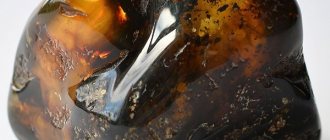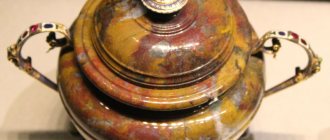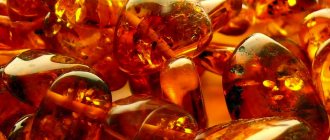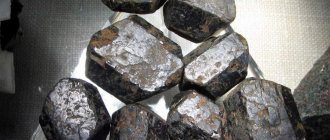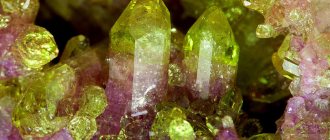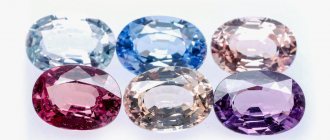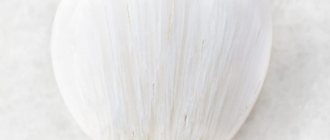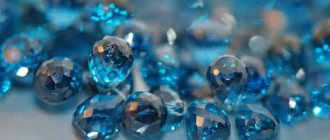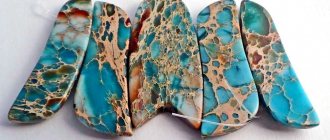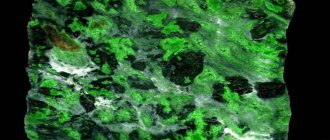This is not an ordinary stone from the bowels of the earth, but the frozen resin of coniferous trees. So that the transparent tears of a pine tree turn into solar amber
, several tens of millions of years must pass.
Taking warm pebbles filled with inner light in your hands, it’s as if you are touching history itself. Our ancestors believed that amber
cures all diseases. Surprisingly, modern medical research confirms this belief.
Even a thin amber bracelet
has a beneficial effect on the health of its owner, normalizes hormonal levels, improves metabolism, and eliminates blood pressure problems.
There is no area in which this solar stone could not help its owner: from migraines to serious diseases of internal organs. Amber
also always been considered a powerful amulet that attracts
wealth and prosperity
.
Representatives of Eastern religions claim that the magic of the stone is incredibly strong: this “organic mineral” helps open the chakras, neutralizes negative energy, and ensures maximum realization of the creative potential of its owner. Small amber ball
on a simple chain or even thread - one of the oldest decorations. This accessory is equally suitable for both men and women; it looks organically with any style. Amber is a noble material; it goes perfectly with both an evening dress and an expensive business suit. From time immemorial, exquisite amber pendants and bracelets made of petrified resin were considered a wonderful wedding gift, an offering worthy of reigning monarchs.
Let the warm sunlight of amber illuminate your life.
About amber
Amber is a fossilized pine resin that is over 40 million years old. This is a fossil substance of organic origin, which, under the influence of the environment, has become denser over the years and lost volatile substances, as a result of which today we can enjoy jewelry and decorative items made of bright and pleasant to the touch amber.
Physical properties of amber
Amber is classified as an organic mineral that does not form crystals and is an amorphous framework polymer. The chemical formula of amber is C10H16O; it contains from 3 to 8% succinic acid. In amber that has been in the ground, inclusions of particles of insects and plants are often observed, and this is especially valued in the manufacture of jewelry. The hardness of amber (on the Mohs scale) is 2 - 2.5 - 3. Transparency - transparent, medium transparency, opaque. Trait - no. Luster - glassy. Dispersion, pleochroism - absent. Luminescence - bluish-white to yellow-green, in birmite - blue. Electrified by friction.
Chemical properties of amber
Amber is distinguished by its plasticity, but at the same time it is fragile - it splits when dropped or hit. The mineral can be transparent, translucent or opaque, with a glassy sheen. When rubbed, it becomes electrified, ignites from the flame and emits a pleasant aroma, reminiscent of the smell of smoldering juniper or pine cones. Under fluorescent lighting it has a blue, yellow-green or bluish-white tint. When exposed to temperatures above 150°C, amber becomes soft, and above 300°C it melts. Under prolonged exposure to heat, light and oxygen, it becomes brittle and cracks. Found amber most often takes the form of icicles, drops, or deposits; these can be rounded nodules or spongy tiles. Typically, amber deposits are pieces ranging in size from 1 mm to 20 cm, sometimes pieces weighing about 1 kg are found.
The color of amber is varied: honey, wax, tea, bright golden, transparent as ice, red-brown, cherry red, bone color, silver, greenish, cognac, etc. The most valuable are amber products with a high degree of transparency, in color - yellowish, reddish. Jewelers especially value the mineral in which bubbles of water or air, small insects or plant leaves have frozen. Amber, in which a large amount of air has frozen, has a white-foamy color. The bluish color of the mineral comes from pyrite frozen in it, and the greenish color comes from algae and sulfur pyrite.
Amber classification
Depending on the chemical composition, all amber is divided into 5 classes, which are designated by Roman numerals from I to V. The classification is based on basic organic resins, the amount of succinic acid and the presence of other acids in the composition. Amber is also classified according to its value as a gemstone and the appropriate processing method.
About amber
Amber is a fossilized pine resin that is between 100,000 and several million years old. This is a fossil substance of organic origin, which, under the influence of the environment, has become denser over the years and lost volatile substances, as a result of which today we can enjoy jewelry and decorative items made of bright and pleasant to the touch amber. Baltic amber
History of amber
Pliny the Elder became interested in the question of the origin of the unusual sunny-orange “stone” almost two thousand years ago.
After careful study, the ancient Roman writer came to the conclusion that amber is tree resin. Of course, there were other hypotheses, for example, that amber is a type of natural bitumen. However, in the middle of the 18th century, M.V. Lomonosov once again spoke (and provided evidence) that amber is a completely organic product. Advertising - Continued below
The name of the stone that is familiar to us appeared in the 16th century: first in the form of the Old Slavonic “gentator”, then “gintaras” in Lithuanian, later turning into “amber”. In German, amber in the 13th century was called “burning stone”: to use its healing properties, the stone was set on fire and its smoke was inhaled.
Despite the fact that various inclusions in the form of insects may seem like a drawback of amber, in fact, it is precisely such specimens that are of great value among collectors.
How is amber classified?
There are different types of amber, which are classified into different classifications. Some use a classification that is based on the level of transparency of the stone. The more bubbles inside, the darker it turns out. Here you can find: transparent, translucent, opaque amber and bastard (an opaque stone that has some transparency in thin layers). It is interesting that in nature you can even find variants of amber that combine all of the above groups.
In Ukraine, amber was divided into six main varieties in the second half of the 19th century. Some of them are more common in our country, some are considered quite rare. Highlight:
- Succinite is the most common Ukrainian amber, which is mined for industrial purposes (about 98%).
- Gedanite (often popularly called “rotten”) has a yellow (sometimes dirty yellow) tint. It is extremely rare (only about 2%).
- Stantinite – has a brownish-black tint. It is quite rare in Ukraine.
- Beckerite is a viscous amber with a brown color.
- Crancite (or “immature”) is soft and elastic. Has a greenish color. Very rare.
- Glessite is a brown-red amber, which is very difficult to find in Ukraine.
Among other things, there is a separate classification of amber, which is based on the color of the stone, its transparency and pliability during processing. Here you can count nine types:
- Batter is a gem with a high level of transparency that can be easily polished. The color of amber varies from amber (almost transparent) to dark brown. He is highly regarded because he is very handsome.
- Translucent - a stone of a yellow or dark yellow hue. Sometimes it may be red or bluish. The color is slightly hazy but has translucent layers. Polishes without problems.
- Bastard - has an unusual yellowish tint, with dark spots all over the surface. More or less transparent. Can be polished without any problems.
- Bone – snow-white color, not translucent. Externally it resembles ivory. Can be polished.
- Red is not transparent and cannot be polished.
- Layered – snow-white color. No need to polish.
- Foamy - the appearance of the stone differs from ordinary amber. It got its name because of the large amount of frozen foam. It has a white opaque tint. It is very porous, due to which it is very light. Can't be polished.
- Contaminated – distinguished by black or gray color. Usually not polished. Transparency is extremely low.
- Overburden - characterized by a large crust from oxidation, has a red tint. It can be polished, but it is difficult to polish. May be translucent.
Craftsmen have always tried to make some unusual gem from ordinary amber, to refine it, clean it, polish it so that it sparkles with all its colors. Of course, processed stone is more valuable. It is used to create jewelry.
Origin story
Man first became acquainted with amber in the Neolithic era. This gem was of great value and even then they knew how to process it correctly. According to data, ancient people valued amber for its beauty and unusual appearance. The first description was made in the 10th century BC. Now copies of that time can be viewed in the London Museum.
Amber is a sun stone. It received this name due to its bright yellow color. In the sun it shimmers and has a very unusual shade. In some sources you can find its other names - Tears of the Sea or Gift of the Sun. All of them characterize amber.
Scientists have been trying to understand the unique structure of the stone for thousands of years. It was valued by stone cutters for its uniqueness.
How was amber used in ancient times?
Each country used the stone for different purposes:
- In Egypt, incense burners were made from it. They were used for various rituals.
- Amber in Greece was called electrom, which translated means “shining”. The Greeks believed that it brought victory in battles and therefore always took it with them to important battles as a talisman. For this purpose, men's jewelry or weapons interspersed with stone were specially made.
- In Rome, this gem spoke of the status of the family. Only rich people could afford to wear amber jewelry.
Amber gained its greatest popularity in the 17th century. All noble ladies had jewelry made of sunstone. This spoke of their wealth and status.
How to distinguish amber from a fake?
The value of amber both as a precious stone and as a source of scientific knowledge creates the ground for its falsification. It is not easy even for a professional to distinguish amber from its imitation, and to understand this, you can make a list of diagnostic characteristics of amber: - heterogeneous coloring with unusual transitions and textures; — the presence of air bubbles of the correct shape; - relatively light, sinks in fresh water, but floats in salty water; - cannot be scratched with a fingernail; - electrified; — burns with the smell of rosin; - glows in ultraviolet light.
But imitations of amber can also have similar properties, so it is important to know what the fakes are made of.
1) Pressed amber. Strictly speaking, this is not a fake at all. This amber is made from crumbs and production waste, that is, from natural raw materials. Pressed amber reveals layered material and irregularly shaped air bubbles. Otherwise, it differs little from solid stone.
2) Digged. With copal, everything is more complicated, since it is also a fossil resin, just young and immature to amber. There are inclusions in copal and it looks almost like amber. But upon contact with alcohol, copal leaves sticky traces, while on amber the alcohol evaporates.
3) Natural resins. Imitation amber can be made from the resin of modern trees, such as kauri or dammara. Sometimes powdered amber chips are mixed with modern resins. For example, an interesting ornamental material is produced - faturan. Such an imitation can be determined using alcohol or heating - as the temperature rises, the resin softens.
4) Artificial resins and plastics. Depending on the material, they can be light, electrified, or glow in ultraviolet light. Such imitations are revealed by a uniform color without transitions, as well as an abundance of air bubbles or their complete absence. A good test is to test it with a hot needle: the smell of burning plastic is difficult to confuse with rosin.
5) Glass and acrylic. They attract attention with their very bright colors and perfect surface without defects. Glass is also heavy and is not afraid of heat. Acrylic begins to melt when burned.
Compatibility with Zodiac signs
The stone will help in your personal life
Amber is the mineral and talisman of Leo. They both have one patron - the Sun. The gem is not suitable for Taurus, although there are no particular contraindications; this sign simply does not react to the energy of the stone.
Effect on other representatives of the Zodiac:
- Aries. The talisman will give this zodiac sign willpower, an inner core, which will bring success in business. It will also highlight and enhance the best sides of Aries. It is recommended to wear beads or ornamental stones in a gold frame.
- Calf. An earth sign does not react to amber, but a gem of a dark shade or completely black can protect against moral failure and rash dangerous steps.
- Twins. The representative of the air element will become more balanced, learn to complete things, and get rid of throwing around. A translucent smoky stone suits him.
- Cancer. For men and women of this zodiac sign, a transparent stone with green and blue shades is suitable. The amulet will relieve Cancer from excessive suspiciousness, anxiety, and help gain self-confidence.
- A lion. The best talisman for Leo according to the horoscope is a translucent mineral of a rich orange, yellow or red hue. An original white or milky gem in gold would also suit the sign. It will give this sign success and happiness, strengthen intuition, allow it to gain attention and respect in society, and shine in any company.
- Virgo. A set of amber jewelry will strengthen Virgo’s mental abilities, protect against stress, nervous strain, and teach how to communicate with other people. Minerals of honey, orange tones, and the color of ripe ears of corn are suitable for the earthly zodiac sign.
- Scales. This sign should choose delicate, finely handcrafted jewelry (such as silver earrings or a ring), rather than just a raw piece of amber. Such an amulet will give you self-confidence, relieve doubts and worries, and give you spiritual strength.
- Scorpion. The sign is advised to wear gems of rich colors, always with original inclusions. They will take Scorpio to a new level of spiritual development, help establish contacts with others, and make him popular.
- Sagittarius. A large mineral with a rich but uneven color is suitable for this zodiac sign. He will help Sagittarius climb the career ladder, gain authority, bring all things to an end, and realize the craziest ideas.
- Capricorn. Stones of calm tones - white, cream, lemon, gray - are suitable for a discreet sign. They will give the withdrawn Capricorn the joy of life, discover abilities that he did not know about, and increase his sociability and importance in society. It is not recommended to wear the amulet all the time, as it accumulates negative energy emanating from the owner.
- Aquarius. Small pieces of frozen resin with air bubbles inside and a smoky structure are suitable for this representative of the Zodiac. The sun stone will bring a dreamy nature down to earth, help to establish strong connections with people, and achieve a real goal in life.
- Fish. Transparent or translucent blue amber is suitable for a water sign. It will help preserve health, strengthen the entire body, raise self-esteem, increase efficiency and discover unusual talents.
Amber is a warm and reliable stone. It is recommended for any person who wants to improve their own life, get rid of worries, and find quiet family happiness. The beneficial magical and healing properties are better manifested if you believe in the power of the mineral and do not forget how important proper care is for it.
History and origin of the stone
According to legend, many centuries ago the Earth was illuminated by 2 luminaries. One day they collided and one fell apart into many pieces. Small fragments fell into the seas and oceans and became amber.
According to another legend, the sea goddess Jurate fell in love with the fisherman Kastitis and took him to the bottom to her amber palace. Jurate's father learned about this and became very angry. He destroyed the palace, the fragments of which are washed ashore by the sea.
The stone has been known for a long time:
- The first mention dates back to the 20th century BC. e. – in Ancient Egypt it was added to the composition for the mummification of the dead;
- in Ancient Rome it was a symbol of well-being and was used to create jewelry;
- used by ancient healers to treat diseases, described in the works of Avicenna and Hippocrates.
Ancient names of amber:
- electra – Greek “shining”;
- kahraba – Arabic “straw stealer” (the ability to become electrified);
- burshtin – Ukrainian “burnt stone” (it was set on fire and used as incense).
Stages of how amber is formed:
- resin (resin) is released from the tree trunk, this happens when the integrity of the bark is damaged or in hot, dry weather;
- the drops slowly solidify one at a time or gather together, and the water gradually evaporates from them;
- under the influence of external factors (swamp gas rich in nitrogen, the presence of iron, etc.), the hardening resin can change color.
Sometimes insects, elements of surrounding vegetation, soil, sand, air get into the resin; these are called “inclusions”.
This is where the inclusions inside the gem come from.
The largest piece of amber in the world weighs 80 kg and is kept in the Copenhagen Museum. The gem was found in 2014 in Sumatra. 3 specimens of amber are recognized as the most expensive, each of which costs about $10,000:
- 1st contains a frog in the form of an inclusion;
- inside the 2nd one a lizard 10 cm long froze;
- in the 3rd, a 7-centimeter chameleon was preserved.
To watch a radio program on the topic:
Amber: the gift of the sun
This stone has many names, and each of them reflects one of its unusual properties. Yes, English amber
comes from “ambergris”, the subtle smell of which amber acquires when rubbed.
The German Bernstein
means “flammable stone”, and the Finnish
merekivi
means “sea stone”, after one of the places where it was formed.
Persian kahraba
and Turkish
kehribar
reflect the ability of rubbed amber to attract straws.
The same property formed the basis of the Danish raf
(robber) and Lithuanian
latres
(robber).
In Rus', the stone was called alatyr (from the Greek electron, converted by the Tatars - “solar”). It was mentioned in fairy tales and conspiracies as a white-flammable stone and had a mysterious reputation.
Be that as it may, in our time, amber is considered one of the most valuable organic colored stones. What's the secret?
Stone from fairy tales
The debate about what amber actually is has not subsided for many years. Trying to explain the origin of the stone, peoples composed tales and legends. The first detailed description of amber was given in the 1st century in the book “Natural History of Precious Stones.”
However, it was only at the end of the 19th century that it was fully proven that amber is a frozen fossil resin of conifers, consisting of approximately 78% carbon, 10% hydrogen and 11% oxygen. That is, 100 grams of amber contains 82 g of carbon, about 6.5 g of oxygen, approximately 7.5 g of hydrogen, nitrogen, sulfur and some minerals. Unusual for a stone, right?
Amber becomes electrified by friction, is flammable and softens at 180 °C. The stone lends itself well to processing, so it is actively used in jewelry. At the same time, it is a rather fragile material. Its hardness coefficient is about 2 - 2.5 on the Mohs scale.
By the way, precisely because of its fragility, the famous Amber Room never remained in the palace of the Prussian King Frederick I, but “moved” to the summer residence of the Russian emperors. When the work was already completed, the fragile amber mosaics collapsed, and the angry Prussian king drove the master Andreas Schlüter out of the country. Without appreciating the beauty of the room, the heir to the throne, Frederick William I, presented the amber panels to Peter I.
Colors and varieties of amber
Today there are more than 250 types of amber, including “earth” and “sea” amber.
The reason for this diversity lies in the many inclusions that fall into the resin that has not yet hardened. It could be minerals, air bubbles, or even algae that affect the shade of the stone.
The most common is succinite - it is what many people associate with “real” amber. Glessite, an opaque brown stone, waxy gedanite, dark matte bockerite and black stantienti are also widely known.
Amber deposits
Unlike other resins, amber is found in marine and coastal-marine placers. How is this possible?
It is believed that about 50 million years ago, parts of Europe and the Baltic Sea were dry land. The sudden warming led to the fact that pine trees began to intensively secrete resin.
Now the largest amber deposit (Palmnikenskoye) is located precisely on the coast of the Baltic Sea - in the Kaliningrad region. The age of the amber mined there reaches 23-43 million years.
Today, world production of this stone reaches 800 tons per year. Approximately 80% of the volumes come from deposits in Russia, the Baltic countries and Poland. Amber is also mined in Kamchatka and Siberia, in a number of European countries, in Africa and Central America.
More than others, jewelers value Baltic amber (succinite), Romanian, Sicilian, Burmese, Dominican and Mexican amber, which contain from 3% to 8% succinic acid.
Pressed amber
Almost 90% of mined amber is uncontaminated small stones. In order not to lose pure samples just because of their size, the stones are sent for pressing.
Pressed amber is natural amber. It is made from cleaned and crushed stones, which are placed in a special sealed mold. There at temperatures up to 250°C and a pressure of about 3000 atm. they become plastic. As it cools, the mass hardens and becomes pressed amber. The stones, made up of many “pieces,” are most often distinguished by their original coloring, reminiscent of the patchwork technique.
The density, hardness, fragility and light refractive index of pressed amber are similar to natural amber. Often, even experts can distinguish pressed from natural stone only by examining them under a microscope.
The fashion for amber, like many ornamental materials, either went away or returned again. Nowadays, jewelers frame the sunstone with gold and silver, combining it with semi-precious inserts and creating unusual jewelry.
Geographical range of amber
The variety of stone mined in different countries and regions has not surprised specialists for a long time. The color, shape and texture of the stone are influenced not only by the difference in the types of coniferous trees that produce resin, but also by the climate conditions that are characteristic of a particular place.
Amber found in Ukraine is difficult to distinguish from Baltic specimens in appearance. Many experts assumed that during the massive meltdown of glaciers, amber layers moved from the Baltic shores to Ukrainian lands naturally. The presence of a large number of inclusions in the form of frozen insects in Rivne amber helped resolve this issue in favor of the fact that it was, after all, there initially: the insects were not of Baltic origin, but turned out to be “local residents.” The colors of Rivne amber, compared to Baltic amber, are much brighter, and the range is richer, which indicates that the deposit was not “carried over” by glaciers, but was present there on its own.
There is also a Dominican type of amber, regarding which there are controversial opinions. Most often it is called copal and it does not come from the resin of coniferous trees, which greatly affects its structure. Copal is significantly inferior to “classic coniferous” amber in terms of hardness and immediately softens when heated strongly.
Stone deposits
The stone is mined in a large number of countries. These include:
- Romania;
- Poland;
- Sicily;
- Ukraine;
- USA;
- Germany;
- Mexico;
- Canada.
In the territory of the former CIS there are two deposits that are classified as large: the Baltic Republic and the Kaliningrad region.
Properties
Amber is a collective name. This is the name given to fossilized resins from fossil coniferous trees. Such stones are called organogenic.
Physico-chemical
Amber has very little hardness and is fragile. However, it polishes well and is quite easy to process.
At a temperature of 120-150 degrees it softens, and as heating continues, it lights up.
Dispersion and pleochroism are absent.
When rubbed, it becomes electrified.
Treating yourself with ancient resin
Many healing properties were attributed to the stone.
Here are some:
- Normalization of blood pressure.
- Reducing pain, especially dental and headache pain.
- Improves heart function.
- Has a bactericidal effect.
- Improves the functioning of the gastrointestinal tract.
- Helps with varicose veins and joint diseases.
Representatives of “scientific medicine” also recognize the beneficial properties of amber. You can buy succinic acid at any pharmacy. It is taken as an anti-stress, anti-toxic, stimulant.
There is amber therapy, with its help oncologists slow down the growth of tumors.
Expert opinion
Semenishcheva Polina
Specialist in mineralogy. Graduated from St. Petersburg Mining University.
For your information : in Poland they sell “Amber Vodka”, which is a good cure for sore throats and colds.
Solar Magic of Fossil Resin
In most countries, the golden stone has always remained an overseas miracle.
Many magical and mysterious properties were attributed to him:
A couple of centuries ago it was customary to give amber beads to wet nurses. Then the child will grow up healthy and calm.
The sun stone brings good luck to the owner, preserves health, and protects from misfortunes.
It sharpens the owner’s intuition and helps to reach the intended goal in the shortest possible way.
An amber amulet in the house will protect against fires and lightning.
Place a piece of rough stone at the head of the bed. This will scare away malicious entities and ensure healthy sleep.
For decorations, seeds, sick...
Most often used in jewelry. Jewelry, crafts, inlay, souvenirs - the reflections of the sun will come in handy anywhere.
In medicine. Succinic acid and succinic oil are used by people in white coats.
In agriculture, the use of succinic acid is limited to seed treatment.
Expert opinion
Semenishcheva Polina
Specialist in mineralogy. Graduated from St. Petersburg Mining University.
Please note : amber varnishes are distinguished by their bright shine and great hardness.
The famous violins of the masters Stradivarius and Amati are covered with amber varnish, which gives them a melodious quality
